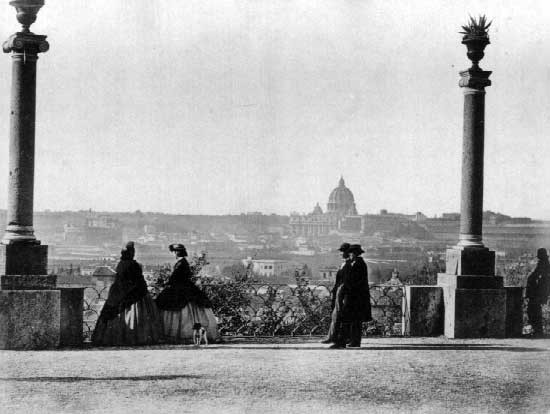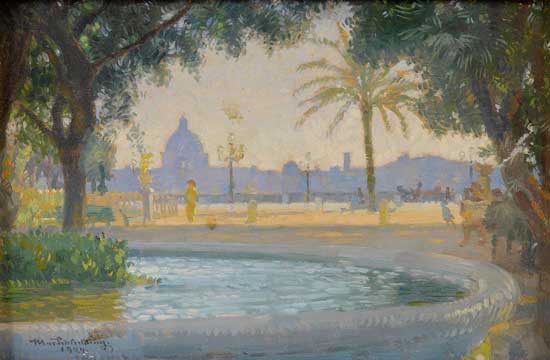
Among the most characteristic places of Rome, there is one that is a particularly and well known and romantic. This is an elevated area part of Villa Borghese, which offers an extraordinarily exciting panorama.
The Pincio, also known as the Pincian Hill, is the name of this area, once a favourite choice of the nobles for their usual walks in the city. How to blame them? After all, it is here thatthe ancient Romans had built buildings and gardens, and proof of such assiduous historical presence is given by the names of the places.
“Pincio” originates from the name of one of these ancient Roman families, the Pinci family, who built some buildings here. The so-called “muro torto” (curved wall) is a construction trace of this historic stage.
The present architectural features of this site, definitely in a neoclassical style, are linked to the architect Giuseppe Valadier, and therefore to the policies of Napoleon Bonaparte. Valadier was also in charge of the project of Piazza del Popolo in 1816. From this central and very busy famous square in Rome, you access the Pincian terraces through two hairpin turns. It was the architect himself who include plant elements in the project, creating an interesting landscaping mixture between natural and constrution components.
Valadier was not insensitive to the charm of the place, and planed here a private residence, called Casina Valadier. This house, made according to the architectural styles of the neoclassical period, was, however, never occupied by the architect, who unfortunately died before he could move in.
Strolling on the Pincian Terraces, you may notice the presence of some sculpted busts. These are historical figures that played a vital role in the historical and cultural events of the country and their arrangement dates back to the mid-twentieth century.
It was Pius IX to give a real boost to their positioning, although the project was originally made by the Roman Republic at the beginning of the century. Sources say that on May 28th,1948, the so-called Triumvirate decided to make some marble busts to commemorate some famous historical figures. A fund of ten thousand liras was allocated for their construction. At the time, the Italian State bought Villa Borghese and initiating a series of improvements. Among these, there were also the sculpted busts, the number of which increased over the years, reaching well 228 in the sixties.

Max Schlichting, 1924.
There are only three names of women portrayed: Vittoria Colonna, Catherine of Siena, and Grazia Deledda, while, among the most famous busts there is a particularly interesting one dedicated to the Jesuit Angelo Secchi, a major Italian astronomer who lived in the nineteenth century. He was director of the Astronomical Observatory of the Roman College, and to him we owe the placement of the so-called “mira” to determine the meridian of Rome. The column and the bust were damaged by vandalism in the sixties and then restored in 2001.
It also appears that Pope Pius IX decided to exclude from the busts that were to be placed on the Pincio certain personalities considered atheists, heretics, or who he believed did not deserve to be celebrated in such a place. Among them were Arnaldo da Bresci, Giovanni da Procida and even Napoleon Bonaparte himself.
Another curiosity is related to the decision made in 1883 to portray only those figures that had died at least 25 years before. If you are wondering, however, if the placement of the marble busts followed a given project, know that their arrangement is completely random. Exceptions are some herms created in honour of the fallen during the First World War in 1918.
Among the personalities that you can admire today on these terraces are: Leon Battista Alberti, Cesare Beccaria, Giovanni Boccaccio, Gian Lorenzo Bernini, Christoforo Columbo, Ugo Foscolo, Masaccio, Filippo Brunelleschi, Giordano Bruno, Cola di Rienzo and even Archimedes of Syracuse.


